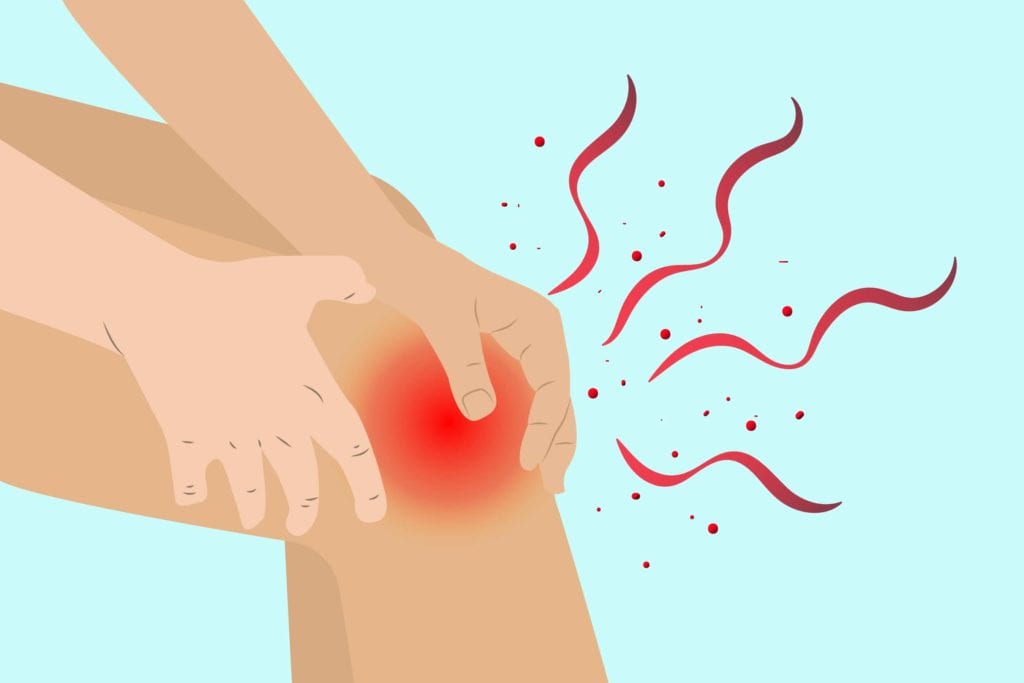

Knee osteoarthritis (OA) is a common condition that affects millions worldwide, characterized by degeneration and loss of cartilage, joint inflammation, and bone remodeling. This condition not only causes joint pain but can also lead to swelling, stiffness, and decreased mobility. If you have knee OA, it’s important to manage your pain well so you can feel better and do more.
“One of the biggest problems in dealing with knee OA is that most people don’t fully recognize they have it until the pain is pretty constant and severe, such that it is limiting their abilities to work, do family activities, enjoy sports and recreation, or sleep well,” says James Cook, DVM, PHD, OTSC, William & Kathryn Allen Distinguished Chair in Orthopaedic Surgery at the University of Missouri’s Department of Orthopaedic Surgery. “In this stage of OA, effective treatments are more limited, so we want to help people recognize the earliest signs of knee OA in order to keep all of their treatment options open. We always encourage people to have any recurrent knee pain, swelling, or stiffness checked out by a doctor, especially if there is any family history of OA or if the patient has had any injury to the knee or surgery on the knee.”
Monitoring Your Knee Health
Paying close attention to your knee health is crucial, especially if you have ongoing conditions like osteoarthritis or if you’re recovering from knee surgery. Keeping an eye on your knees can help you watch for symptoms so you can have a more informed conversation with your doctor about all of your available treatment options. Here are some tips for monitoring your knee joint health and knee pain.
Keep a pain diary.
Tracking your knee pain can help you identify the earliest signs of knee OA. Writing about your pain can be helpful in relieving anxiety that can accompany pain. Your diary can help you identify patterns or triggers in your daily life that affect your pain so that you can find ways to prevent, minimize, and manage it most effectively.
Use an activity log.
Besides tracking your knee pain, it’s a good idea to write down what activities you do each day and how long you do them. This can help you and your doctor figure out which activities might be making your pain worse and how taking breaks or trying different movements can change how you feel and what you are able to do. This log can also be very helpful in determining the need for physical therapy, a knee brace, and/or assistive devices.
Try a symptom tracker app.
There are several mobile apps designed to help track athritis symptoms. With the PatientSpot app, you can track your symptoms, treatments, and other health data from your computer or smartphone and share the data with your doctor.
Wear a fitness tracker.
A fitness tracker helps you monitor your daily physical activity levels. By measuring your activity, a fitness tracker allows you to see patterns in your mobility and identify what activities might be causing knee discomfort.
Follow up with your doctor.
Regular check-ins help you and your doctor see how your knee is improving and if your treatments are working well so that adjustments and additions can be made safely and effectively.
Note the times when your pain and stiffness are at their worst.
For many people, their joints feel stiffest in the morning or after they’ve been sitting for a long time. Knowing when you feel stiff can help you plan your activities and how to manage your knee pain better.
Keep track of any pain medications and supplements you use.
This includes over-the-counter medications as well as and prescribed treatment and supplements. Write down how well these medications and supplements help your knee pain as well as any side effects.
Be a More Proactive Patient with PatientSpot
PatientSpot (formerly ArthritisPower) is a patient-led, patient-centered research registry for people living with chronic conditions. You can participate in voluntary research studies about your health conditions and use the app to track your symptoms, disease activity, and medications — and share with your doctor. Learn more and sign up here.
This article was made possible with support from the Missouri Orthopaedic Institute.





